How did We Get into this Situation?
Without proper planning the intranets can easily become dispersed and uncontrolled. How you initially identify what "dispersed" and "uncontrolled" actually mean is up to the organization in question. The example we will describe shortly is a story of how one organization tried to consolidate a set of web sites that had been built to cater for specific information demands when the main intranet proved too slow or too conservative to respond. Bear in mind that, during the period of this example, corporate, personnel, and management changes altered the way in which the intranet was managed.
The definition of "dispersed" in this case was interlinked with the definition of "uncontrolled". The intranet was considered "dispersed" because there was more than one place to look for information, and "uncontrolled" because management, who defined what was meant by "uncontrolled", was possibly influenced by a corporate strategy that was not communicated to the people on the ground who had already built the sites.
Case Study: How We Got Here
You may have an internal intranet site or two. Then more appear. Or maybe you have an 'official' intranet and web servers start appearing, individual or departmental. These may be the result of someone's 'good idea' and they're used both in the department and outside, or they may be a way of documenting what an individual, team, or department does. Whatever it is, you get satellite web servers appearing for either general or very specific audiences. These are in the main good ideas and effort expended by people working independently to what they see as enhancing what they do and providing information about what they do - maybe the company has said "we're not very good at communication", and these people have done something to address that.
So let's plot a time chart - units are arbitrary. Links can be one- or two-way, adding to the confusion.
Time: T
The intranet begins life as a simple intranet, centrally managed and reasonably well-used. Others perceive the limitation, but don't say, or don't have the mechanism to say. The Server in this case is a designated server (or server cluster) that is the host of the main intranet. We're using a simplified 'black box' diagram approach here.
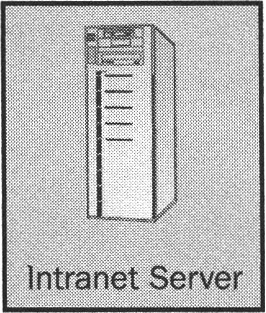
Figure 1: simple intranet
Time: T + 1
A manager has been asked to produce documentation for a project. This involves loads of paper, revisions and collation of several people's efforts, and time, which they haven't got. Then someone says, "Why don't we build a web site?". So a new server is built that the department can control. In this case server may mean something like a Linux or Windows Server with Apache, a Windows server with IIS or Windows workstation with PWS, or any other conceivable method of web serving - it really doesn't matter for the purposes of this explanation.
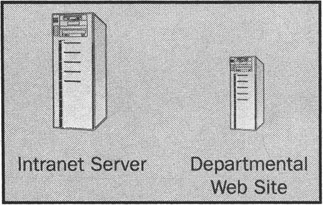
Figure 2: intranet and departmental server
Time: T + 2
So the web site is built - and it gets talked about at peer level. It becomes something of a feather in the cap of the department, and because it's good the idea gets copied. Departments talk to each other and interlink their own web site homepages. However this interlinking can be quite random
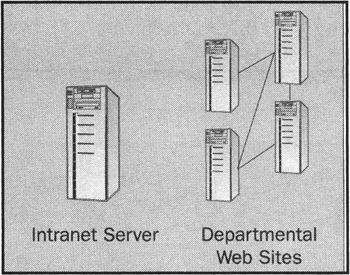
Figure 3: interlinked departmental web sites
Time: T + 3
Individuals get in on the act - they want to learn the technology of web sites, build them on their own PCs and build web servers and become very skilled at doing so. The authors have the same sort of personal links as the departments, and random links develop, and the existing sites find more to link to. The intranet administrators have heard of some of these sites and try to link into some of them. But they can't find them all.
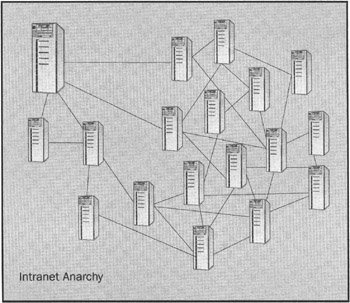
Figure 4: chaotic intranet
Time: Today
The result is a widely dissipated set of information held on a variety of servers with links that get confusing. The intranet managers recognize the value of having all this information and try to provide a link to everything. They fail. Even trying to maintain such links is getting to be a fulltime task, as they have both to discover the sites and talk to the owners. Then keep track of changes.
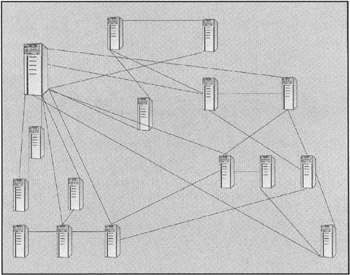
Figure 5: uncontrolled and anarchic intranet
Relax, You are Not Alone
The vast majority of companies have an intranet that is fragmented to a greater or lesser degree; there is no perfect intranet. Whatever exists in your company is the result of various pressures and compromises. And of course, the intranet is not static; new content needs to be added the whole time, not only to keep the intranet live, but because business is dynamic. The best that can be achieved practically is to design your perfect solution and attempt to move towards it, always aware that the goalposts are going to change as new functions are found for the intranet. So in this chapter we won't present a foolproof solution, instead we will present an open-ended approach allowing yourself to promote a coherent structure and giving yourself the framework in which it can operate and allow for change.
Reasons Why You May be in this Situation
We've given a broad example of the scenario you may find yourself managing - but let's just examine for a while how this has developed. Identifying the elements of the scenario that you are facing will assist you in dealing with the people who have put it in place. There may have been very good reasons why this situation developed. It may be because the controllers of the intranet were not receptive to new ideas or took too long to implement them, or didn't want to let go of the power. It may be any combination of these factors. Whatever led you to this juncture, it is now your job to bring some sort of order into the chaotic anarchy that is now in place. You've probably identified it as chaotic anarchy because it's not working well - and you have navigation, content, or duplication problems. We'll deal with each of these later in this chapter.
Organic Growth
Your intranet may have grown organically, without a development plan in place. This is a natural consequence of unplanned and uncontrolled development, but often has the advantage of adding valuable content quickly. I'll be talking later about the way that this effort is utilized - if you go about it the wrong way it is very easy to alienate the people who have put in the work to get their sites up and running. Assuming that their content is useful, alienation is not going to help in your efforts to make a coherent intranet. However in this organic growth there is the danger of content duplication - or worse, different solutions for the same sort of problem that will lead to confusion amongst users.
Organic growth will have brought a rich diversity of information content into the wider realm of your users. It is worth thinking that even though the information contained on those sites may have been repeated by others, that the audience for those sites may not appreciate that there is another source of that information.
Sub-Brand Ownership
The ownership of an intranet site may have become a status symbol where departments have created their own 'sub-brand' within the company. A sub-brand may be a statement of identity or an element in the power struggle within the company. You may not be aware that there is a power struggle, so objectivity and tact must be the order of the day. You could find yourself unwittingly drawn into inter-departmental politics that you never knew existed! Sub-branding may be important to the department or people in question, as they may see their collective or individual identity within the company as not as high-profile as they would like. This must be considered in how you handle any change process for the intranet.
Introduction of a CMS
Has the diversity of web sites and web site content come to light as a result of the implementation or consideration of a new Content Management System? In the analysis prior to its implementation any duplication or diversity would have come to light. If, as does happen, a CMS is imposed on a division by the corporate management, it may well have come to light as those charged with implementing the CMS are part-way through the job. This will cause angst to those who thought that their plans were well-developed. A well-thought-out CMS will be able to cope with this problem, however on most occasions this is not the case - and either the CMS or the content (or both) will have to be shoehorned to fit.
Publishing Controls Didn't Exist
It is almost inevitable that in a diverse organically grown intranet that there will be little compliance with a corporate design or adherence to standard uses of the code necessary. It is inevitable that designers of the disparate sites will have used whatever tools they feel comfortable with - Frontpage, Dreamweaver, Arachnophilia, Homesite, TopStyle, Word, hand-coding, what you will. What is virtually certain is that very few of these sites are going to have a DTD (Document Type Definition) so that the browsers will have to enter 'quirks' mode to deal with a language they'll have to interpret before being told what it is. Also, while the intranet is subject to accessibility requirements, it is likely that only a few of these content producers will have adhered to them.
There will be reasons for people using a variety of tools - probably because they know no other way and have acquired the tools to do the job. They probably do not know about or appreciate the importance of standards - they'll use the ones that the first book they bought about HTML coding tells them. They'll use convoluted table-based layouts and spacer graphics to achieve what they want, often because that is what the tool is doing for them. So their content will be bloated and not as trim as it may be.
There is a considerable school of thought that sees the coding style as unimportant - unfortunately this pervades a large number of commercial web sites. In any redesign, if you are not able to use the latest coding standards then you're only causing trouble for yourself in the future when markup standards like XHTML 2.0 make an impact.
So where does this leave publishing controls? Much as it will be resisted, you will have to implement them and win the authors round. We'll deal with how a little later.
It Doesn't matter, It's Only the Intranet
The intranet is often perceived as a poor second cousin to the Internet. The Company's Internet presence is, after all, the public face of the company. Only employees use the intranet, so it may be considered that they must manage as best they can. There are more important things to do, like producing products for sales, than look after the internal systems. However you look at it, development of an effective intranet solution will reflect on the eventual cost-effectiveness of the way that people work within the company.
Refer to Chapter 2 concerning Return on Investment for a detailed discussion on this.
Does this sort of argument really hold water? Is not the goal of organizations to make things run as smoothly as possible for all concerned? And where has this view come from? Presumably it was not current when the original intranet was first conceived. Has anything changed? Consider the following:
-
Have there been management changes so that the focus of the business is different?
-
Have there been changes in the fortunes of the company?
-
Are the original site designers and architects still with the company, or still in the same sort of positions?
-
Have there been any redundancies? Those left within the company will probably need re-motivating.
-
Has everyone just got fed up with criticism?
-
Has the person who was the driving force lost the support of their manager?
This is all very well as an argument - except that you have to ask yourself how much extra effort is being expended in producing those extra sales because the information systems on the intranet are not readily accessible. Let's assume for the purposes of this argument that the intranet is important to the company and allows your employees to do a better job. If there is the perception of the intranet being a second-class citizen then you have to promote it. You'll have to justify it to the business. Be realistic on how it can be used and why it should be used. Presumably you are an intranet fan, and don't want to see its use terminated. One of the ways is to make sure that it is viewed as a strategic resource.
The Intranet is Not a Strategic Resource
If the intranet is not perceived as a strategic resource within the company, before embarking on any redesign you have to question whether the perception will change - otherwise what's the point of doing the redesign?
So before going any further, try making a list of what makes a strategic resource and discover some reasons why your particular intranet doesn't fit into the correct category. Here are some of the questions:
-
Is the intranet used?
-
For what purpose is the intranet used?
-
Can you identify an improved ROI?
-
Is it an information repository, or an information black hole?
-
Are any questions being asked on any intranet forums being answered? If not, why not? Is it down to the moderators or administrators having better things to do?
-
What was the last time that a question was asked on any of the forums? If more than a few days ago ask why.
-
Have alternatives been developed to using the intranet because information can't be found? Have the information systems been hijacked?
-
Is everyone who wants use the resources able to do so?
-
Are remote users excluded because they're, well, remote? Are home workers given full access into the intranet? Is this a problem you have to take up with your infrastructure people?
-
If you allow sales people and engineers access to the intranet, are they using it or are they embarrassed to use it because it takes up too much time or looks awful - are they phoning up the office to get information because of this, therefore tying up two people's time?
This list is not closed - in fact it is very open-ended - you can go on for ages developing a hobby of intranet-bashing. So identify the key points and work on them. Above all you have to get the resource recognized as strategic and important to the future working of the company. Otherwise you may find yourself in a position of closing the whole thing down because you don't have a justification for its maintenance.
So let's assume that you can make a case for the intranet being strategic, we can now proceed.
Perspective - The Intranet Wasn't Too Big, it Just Got Very Fragmented
Following on from the previous case study where we declared the results of intranet construction anarchy was the cause of our problems, we didn't take into account what was happening inside the first box we drew that was labeled Intranet Server. It's easy and comfortable to blame everyone else outside the 'official' intranet, but if there was a policy and welcome in place for new information to be put into the 'official' intranet then the number of diverse web sites may not have developed in the first place. Or maybe the intranet server itself has become a little difficult to manage with the resources that were granted.
Let's look at another slant on how the intranet can have grown. As a reminder let's take a second look at conceptual diagram of the organically grown, fragmented intranet:

But what if the intranet server itself has become unwieldy? Not because of the size of the server, although that may be a contributory factor, but because of random additions and changes to the menu navigation system. Two of the multitude of possibilities here are trying to put everything on one page or trying to organize things by author or department rather than popularity or task.
Maybe also the maintenance of the existing intranet server has become fragmented, and the directory structure no longer represents the content. People may have had good ideas and have placed bits of the site in directories that are meaningless to anyone else but the original author. There could also be dead files out on any of the sites. Here are some instances gleaned over the years of directories and filenames that make little sense. I've also included what they were renamed to.
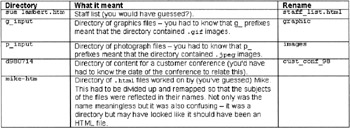
These may have meant something to the original development team, but it was unmaintainable once the team changed.
There was also the case of the people who put the lengthiest description possible on files and directories, such as Jean Smithson Conference Presentation July 99 - New Products and Future Developments.ppt - a filename length of 87 characters. If you need to distribute these files especially by CD, then you may have trouble cutting them as some software for CD burners have been known to choke on filenames longer than 64 characters (or with directory trees more than eight levels deep).
Symptoms of an Overgrown Intranet
It may be that the only thing that users perceive wrong with the intranet is the length of time that it takes to find anything. This can often be solved by a simple case of signposting and navigation. Here are some of the typical signs of a "too big" intranet:
-
You get phone calls and e-mails as users complain of being unable to find anything. How often have you received an e-mail asking if you know where a particular piece of content is on the intranet? The question to be asked first here is "does it exist?" - is the user trying to find something that just isn't there - is there a content hole?
-
If users are disillusioned then usage of the intranet will decline, even if essential information is only available on that medium. Users will not bother to look on the intranet because of the disillusionment, and bad-mouthing may well occur. This may not only be a symptom of an overgrown intranet but of some other condition.
-
If there is duplication of information then users may well be confused where to go. This is a frequent occurrence of organically grown intranets where different authors have detailed a complete process, some elements of which are common to a number of processes. For instance, a software house with products written by a number of departments may each have told the users how to configure a Windows server. If the ostensibly duplicate information gives different instructions then this can be at best confusing and at worst dangerous.
-
Information may be inconsistent and patchy. You have to determine the level of detail that is appropriate to the page, not always an easy task with a diverse user base. If, for instance, a common procedure known to everyone in the company is omitted, what happens to the new employee? How do they find out what to do? This content gap should be plugged. Inconsistency of design will force users to educate themselves on how the individual bits of the site work each time a new portion is launched. This is not only confined to the technicalities of menu systems but the general arrangement of the page. However, too similar looking pages with indistinct titles and navigation may also result in the user being confused.
-
Has the discovery that the intranet is overgrown been prompted by other factors, for example the result of an internal audit or survey? Do you have to give an immediate answer or excuse? If it's an excuse should you not have known? How could you not have known? Have you known and reported on it but your report has been ignored?
-
If a significant amount of content is out of date or inaccurate then it's time that someone did something. That someone may be you! The intranet can be a boring place if there's nothing new. The content must be live and dynamic reflecting the perception of the company by the workforce.
-
Fragmentation - we've already illustrated this in the case study - if it's difficult for users to discover what's there let alone navigate round it then the intranet tends to be less used than it may be for maximum efficiency. In a fragmented intranet the current perception, integrity, and trust of the facility is probably low.
So when you have identified signs and symptoms, what can you do? Assuming that "nothing" is not an option, you will probably have to prepare cost/benefit analyses of why you should be spending more of your time on the resource that senior management may not see with the same clarity of vision that you have. You'll have to do some convincing and selling to ensure that you get the resources to make it work this time. The remainder of this chapter is concerned with looking at how the existing intranet can be brought up to scratch and become worthy of the company so that it'll be used much more.
You will also have to become something of a visionary and evangelist.
The Benefits of Re-Developing Your Intranet
The intranet you have created or inherited is, whatever its state, a valuable company resource. It contains at the very least some important braindumps from your skilled employees - but one of your problems is finding out just what is useful and what isn't. We'll leave that for the moment and take a look at the overall picture. You have to define certain criteria that the new intranet will be designed to meet.
-
The new intranet must support agreed business objectives.
-
Make the intranet more user-centric.
-
Can you offer a better internal service?
-
By providing better business-oriented information you can provide your business with better adaptability to the marketplace.
-
With information in one place, there is a faster induction process for new employees, especially if that information is background.
-
Faster communication will be enabled through your new intranet
-
You will have better informed, and consequently empowered, employees since your new intranet will be an organizational asset containing business information and knowledge.
-
The new intranet reinforces organizational training and development initiatives.
-
For organizations that have geographic diversity the intranet can be used as an online community.
We'll now discuss each of these in more detail.
Supporting Agreed Objectives
We said that the new intranet must support business objectives. What are the business objectives? Can you define them? The short and self-evident answer is that you must be able to define the business objectives, otherwise you'll have a hard time justifying (to anyone) any change that you propose. How they apply specifically to your company can only be up to you; see Chapter 2 regarding Return on Investment to refine your arguments here.
Making the Intranet User-Centric
If users have been complaining, listen to their concerns and what they're complaining about. It may be that the information they need is well hidden, too complex, not in the right form, or simply isn't there. You'll have to tailor the intranet to be more user-centric. If the current intranet is just a knowledge base, consider whether the new intranet should be able to serve up information about current customer requirements and project progress; in other words, make the resource much more dynamic and responsive to users' needs.
Improving the Internal Service
Can you offer a better internal service? Can you define a service level that you expect the intranet to achieve, such as 80% of all queries being answered by reference to the online resource? Can you measure a service level, or is the exercise in quantifying this part of the criteria not cost-effective as the effort that would be expended in the definition exercise is out of all proportion to a foreseeable return? Is the conformance to your proposed service level achievable? Because if not, aim for a lower target. If you don't know what your base figures are for the current intranet, you'll have to carry out analysis to determine those figures before offering an improvement. However this is one of the measures of lesser importance unless your company require such detailed quantification.
Business-Oriented Information
You could aim to provide better business-oriented information (your CMS designers should have something to input here) in order to provide your business with better adaptability to the marketplace. By knowing what is happening in, say, development, marketing, and sales you will have a better idea about targets. Conversely Development can read about the promises that Marketing have been making. If you are putting in a CMS this will require that you have certain standards in place such as page and document templates so that information is presented in a consistent manner.
Employee Induction Processes
With information in one place, there is a faster induction process for new employees, especially if that information is background. The employee will have to go through Health and Safety, and Fire Drill procedures, but things like how to submit an expense claim, notice to give in respect of holidays, the names of people to contact in Payroll and similar less frequently used items of information can be left as a searchable record rather than taking up valuable trainer time. If the whole information were to be printed out and given to the employee at the start of their employment it will become out of date as soon as the first piece of information changes.
Faster Communication
Faster communication will be enabled through your new intranet - if it is designed correctly, and especially if a good workflow system is integrated with the intranet. This is not just the sending e-mail but the discovery of who to send the e-mail to in the first place. If you have your internal telephone directory on the intranet, that will save hundreds of bits of paper being stuck on monitors or walls. But if you do have an internal phone book, make sure that the users can construct a favorites list - those people with whom they frequently confer. It saves both the bits of paper and the endless searching for the correct information.
Benefits to Employees
You will have better informed, and consequently empowered, employees - as long as your company subscribes to the idea of employee empowerment. Most forward-thinking companies do, but it will not hurt to spell this advantage out. This is because your new intranet will be an organizational asset containing business information and knowledge. It will also contain the knowledge base of the company, so you'd better start thinking about security and backups.
Reinforcing Organizational Development Initiatives
The new intranet reinforces organizational training and development initiatives. When such initiatives are being discussed, the new intranet should be the first place that they are made public. This will increase the usage of the intranet - presumably what you want. If you're doing your job properly and people are reading the intranet then these new items will jump out at them - if they don't they're not being sold correctly.
Online Community
For organizations that have geographic diversity the intranet can be used as an online community. We discussed the use of the intranet for discussion forums and the formation of the Knowledge Base in Chapter 9. It's also the place where far-flung people can keep in touch. With home-working becoming more popular, it can also be isolationist. The use of an effective intranet is a way round this isolation.
In summary, what are the overall Business Objectives? Can we yet define them? The answer is yes, using selections from this list where relevant. How they apply to your company can only be up to you.
EAN: 2147483647
Pages: 124